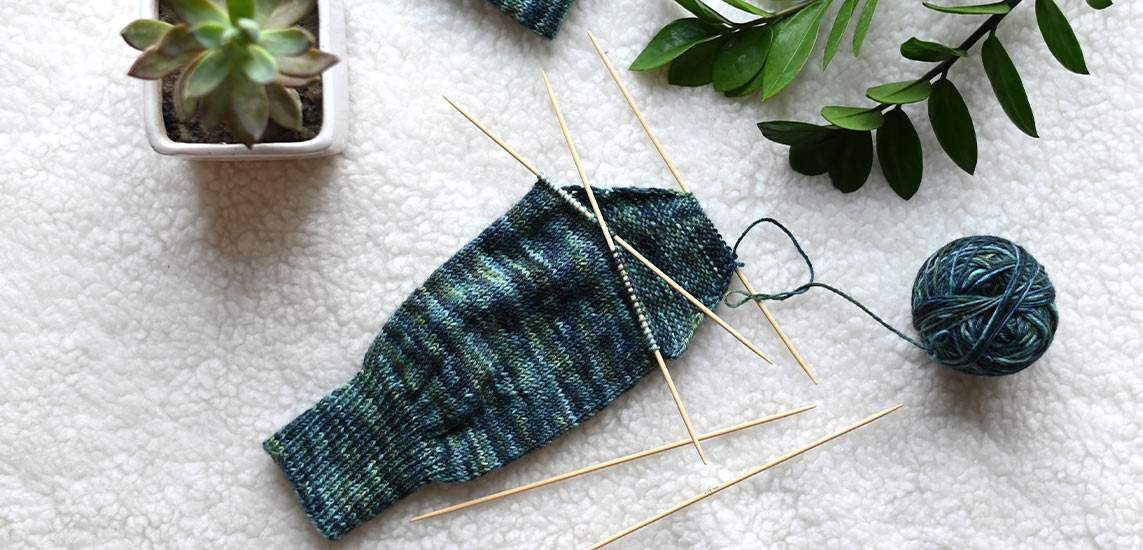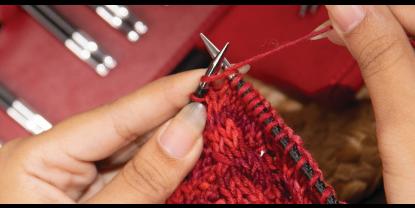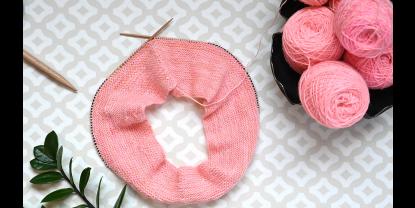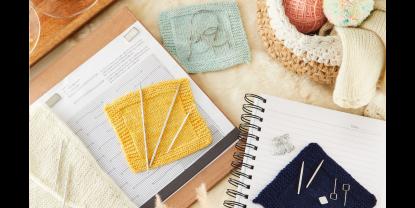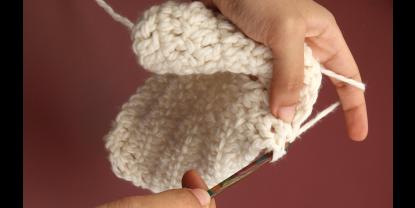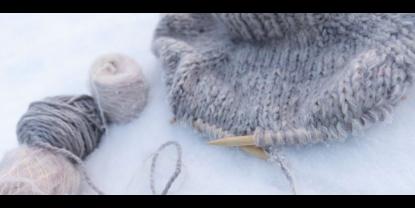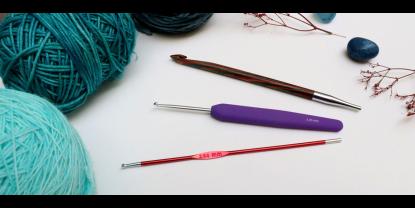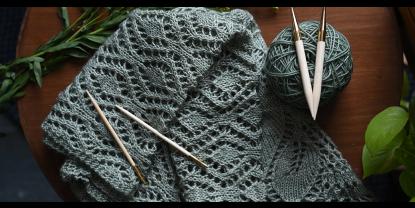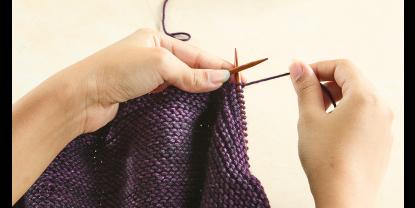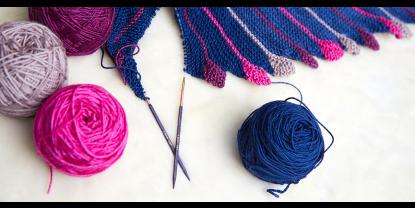Knitting with double-pointed needles is a skill that every knitter must possess. It is a rite of passage for a beginner to become a pro, especially for knitting in the round. DPNs, unlike regular straight needles and circulars, do not work in pairs; you work with three or four needles to make a circumference and an extra needle to knit with. It is multi-needle management but very useful for knitting small circumferences such as tips of mittens, baby socks, and hats.
It becomes challenging to work with three or four needles at the same time. To simplify things, in this blog, we'll walk you through the steps for casting on stitches with DPNs and joining in the round. Our previous guide on using double-pointed needles will also walk you through the steps of knitting with DPNs.
Cast on Stitches on DPNs
Start with cast-on stitches as you usually do. You can work with both odd and even number of stitches. Just check your knitting pattern for the method and stitch count. For example, you have 40 stitches to cast on 3 DPNs; then you need to move 13, 14, and 13 stitches on the needles. You need to keep the same or similar count on each DPN. The only rule you need to follow is to avoid twisted stitches, as it might require you to start again. Once you’ve cast the stitches, make sure they are aligned. While you work with knitting needle sizes mentioned in the pattern, you can use a bigger needle size for cast-on if you are a beginner or a tight knitter.
When you are ready to join your round, set up your needles so the last stitch cast-on is on your right needle and the first stitch cast-on is on your left. Connecting the first and last cast-on stitches is joining stitches that make circular knitting possible.
We will walk through your four methods. As you read through the techniques below, be sure to keep this in mind. And so, without further ado, the methods to join knitting in the round are below.
Method 1: Stitch Swap Join
Swapping the stitches of the cast-on is a smooth way to join the stitches when knitting in the round.
Steps to work the stitch swap join:
- When you join the round, slip the first cast-on stitch (left needle) as if to purl to the right needle.
- Then, insert your left needle into the last cast-on stitch on your right needle and pass this stitch over the other.
- The second step to joining knitting in the round is to pass the first stitch on the right needle over the stitch you just slipped.
- Ensure your yarn is in front (or back) and ready to knit (or purl) your first stitch. Now, insert your right needle into the first stitch on your left needle and begin knitting in the round.
Method 2: Add 1, Decrease 1 Join
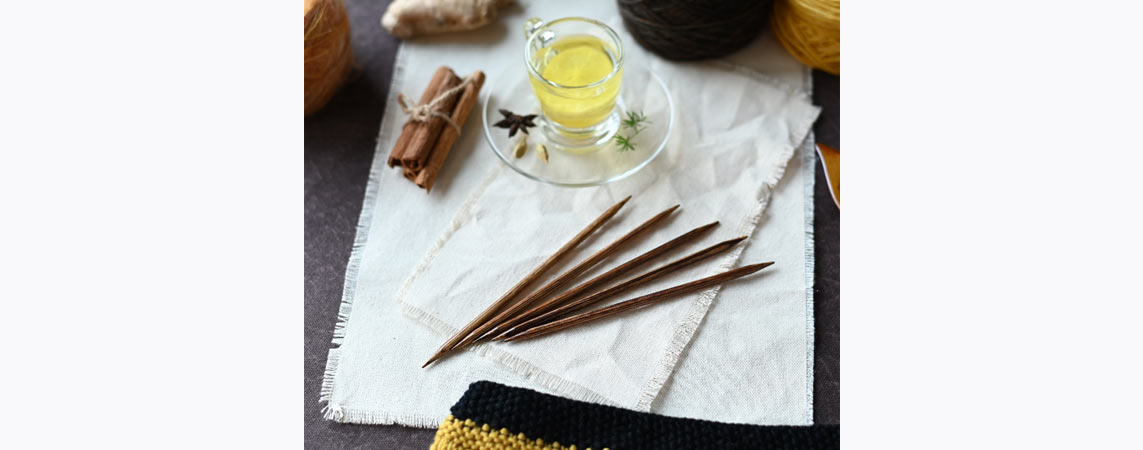
A neat way to join the stitches in the round, this method works beautifully for socks.
Steps to work add 1, decrease join
- Cast an extra stitch.
- Move this extra stitch to your left-hand needle purlwise.
- Remember to place a stitch marker to show the beginning of your round. Now, with your right needle, make a decrease using the knit two together (k2tog) method.
- Your round is now joined, and you can continue knitting.
Method 3: Double Strand Join
There’s no need to do anything special; you can have a strong connection between your stitches. Simply knit with both the active yarn and yarn tail. You only have to work once you reach the end of your tail. It’s better to work two rows. Remember to work the double stitches as one when you start your next round. This method also omits the hassle of weaving in the yarn tail later.
Steps to work the double strand
- Knit with active yarn and yarn tail as one strand till the end of the tail.
- Next round, work with the double strand as one.
Method 4: Invisible Join
Knitters love this method. You join the stitches of the round as neatly as possible.
- Cast on one additional stitch than what your pattern calls for.
- Slip the first cast-on stitch from your left needle purlwise onto the right needle.
- Next, pass the second stitch over the first one (the one you just slipped over) and drop it off the needle.
- Bring the second stitch on the left needle over.
- Slip the stitch from the right needle back to the left purlwise.
- Now, cinch up the excess yarn with the active yarn and the yarn tail and create the invisible join.
- Finally, you can begin knitting in the round.
With these methods, you can quickly knit with your double-pointed needles. Forget those gaps and jogs; they have smoothly joined stitches. Now, even if you knit in the round with circular needles- fixed or interchangeable, these methods to enter the round are still applicable.
High-quality tools are always the key to successful knitting techniques. KnitPro's wide range of double-pointed needles offers multiple options. Choose from 10cm (4"), 15cm (6"), and 20cm (8") lengths in stainless steel, wood, aluminium, and more. Choose your favorite needles or double pointed needle sets for your knitting projects.


